The Fundamental Ecological Split
When identifying waterfowl, the single most critical distinction wildlife managers and birders make is separating the Dabblers from the Divers. This isn’t just a trick; it’s the fundamental ecological blueprint for nearly every North American waterfowl species. All species within the family Anatidae are functionally divided by one simple, critical choice: how they acquire their food.
The two resulting functional groups—the Dabbling Ducks (or Puddle Ducks, Tribe Anatini) and the Diving Ducks (or Bay Ducks, Tribes Aythyini and Mergini)—represent two entirely separate evolutionary paths. The dabblers, epitomized by the familiar Mallard, are optimized for life on the shallow, vegetated margins of a wetland. The divers, like the Canvasback or the Scaup, are specialized for the deep, open water of reservoirs, large lakes, and coastal environments.
The distinction between tipping at the surface and fully submerging dictates everything else: leg placement, bone density, bill structure, and even takeoff method. Recognizing this split is mandatory. For wildlife managers, it dictates which management techniques to apply (moist-soil drawdowns for dabblers vs. Submerged Aquatic Vegetation (SAV) protection for divers) and informs the regulatory models used in Adaptive Harvest Management.
Understanding this fundamental dichotomy isn’t just about identification; it’s the foundation of modern waterfowl stewardship.
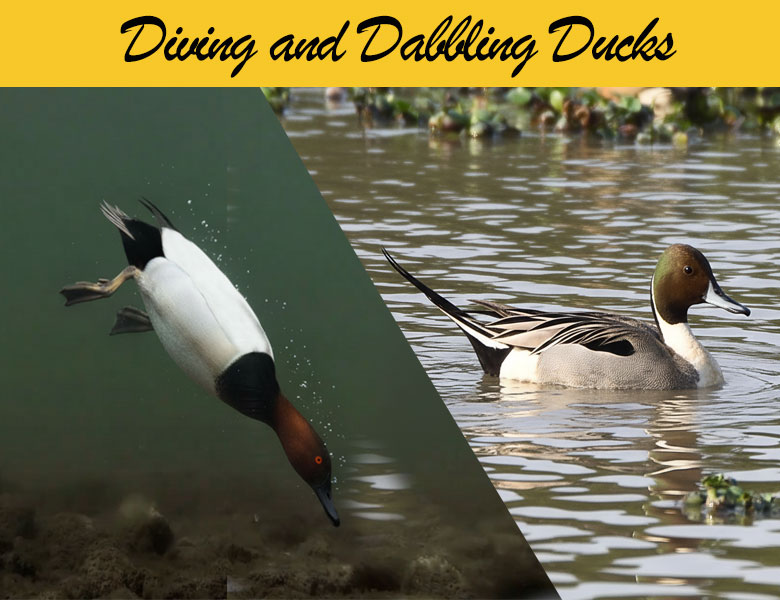
Functional Anatomy: Form Follows Food
The difference in feeding mechanics—surface filtering versus sub-surface pursuit—is the primary evolutionary pressure that has shaped the physical architecture of these two groups.
The anatomical specialization is immediately apparent, offering concrete confirmation of their ecological niche. This section breaks down the three major morphological differences that result directly from their primary feeding mode.
Bill Structure and Lamellar Specialization
The duck bill is far more than a simple scoop; it’s a highly sophisticated sensory and feeding tool.
Dabblers (Filter/Strain): The bills of dabbling ducks are typically flatter and broader and exhibit incredibly fine, dense internal structures known as lamellae. These comb-like plates are designed for filter-feeding, efficiently straining small seeds, fine aquatic vegetation, and invertebrates from the water or mud surface.
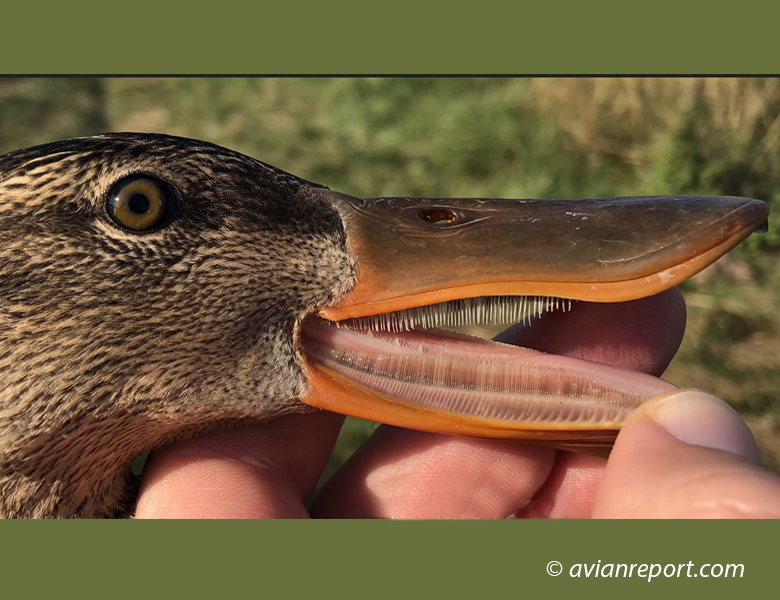
The Northern Shoveler is the extreme case, possessing a massive, paddle-shaped bill with numerous, thin lamellae, allowing it to cyclically skim and sieve plankton and tiny crustaceans from the water column.
Divers (Grasping/Spearing): Diving ducks generally possess bills that are narrower, heavier, and stiffer. Species like Scaup and Redheads use them for pulling up hard-shelled mollusks and scraping vegetation from the bottom. Their lamellae are far coarser and less refined.
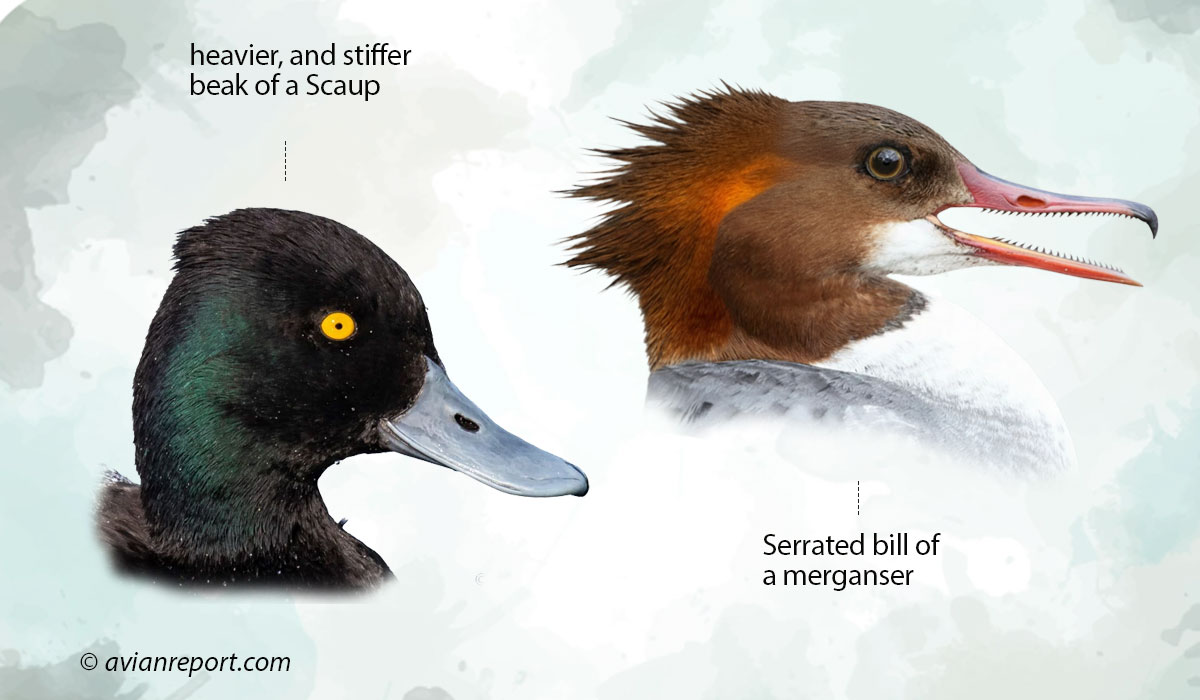
bill is very narrow y serrated to secure small fish.
In the case of the piscivorous Merganser genus (the sawbills), the lamellae have functionally evolved into sharp, backward-pointing serrations that are critical for grasping and retaining slippery fish underwater.
Body Density and Hydrodynamics
The way a duck interacts with the water surface provides one of the quickest field identification keys, directly reflecting its internal engineering for buoyancy control.
Buoyancy Advantage (Dabblers): Dabbling ducks, optimized for surface feeding, have a relatively low specific gravity. This is due to greater air volume retention in their plumage (an excellent insulator) and air sacs, combined with lower bone density. As a result, they ride high on the water, displaying much of their side plumage above the waterline. This high buoyancy is what allows them to suddenly “spring” into the air, minimizing the required flight preparation time.
Sub-Surface Optimization (Divers): Diving ducks, such as the Aythya species (Canvasback and Redhed) sea ducks, are hydrodynamically engineered for underwater movement. They have a denser bone structure and can actively exhale air from their respiratory system and compress their feathers before a dive. Consequently, they ride noticeably low in the water, often showing little more than their backs and heads above the surface, reducing their profile and enabling smoother, more efficient dives.
The Leg Placement Paradox
Perhaps the most telling anatomical difference is the positioning of the palmate feet, a classic example of an evolutionary trade-off: locomotion versus maneuverability.
Central Legs (Dabblers): Dabbling duck legs are positioned close to the center of the body’s mass. This anatomical choice is excellent for two things: 1) providing stability and balance when walking or grazing on land, and 2) generating the powerful initial thrust required for their characteristic, explosive vertical takeoff.
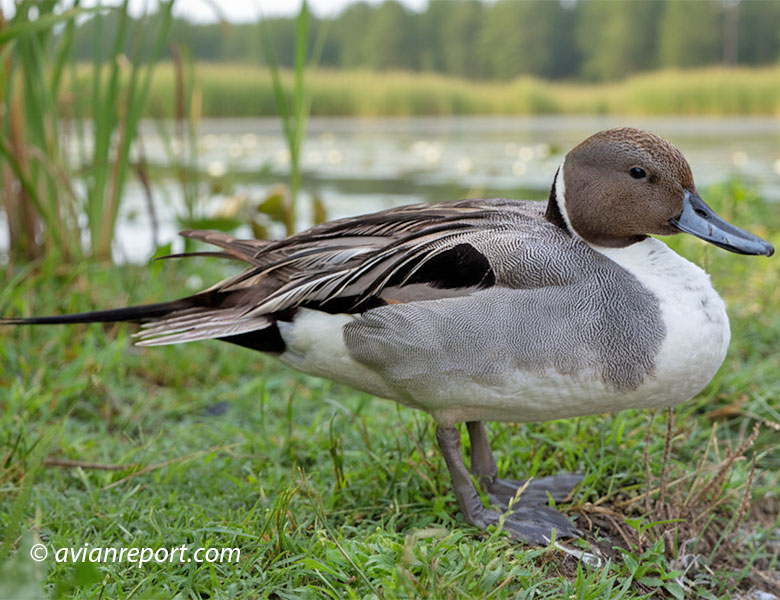
Posterior Legs (Divers): Diving duck legs are attached far back on the body, sometimes appearing to be near the tail. This rear-mounted position transforms the feet into incredibly efficient, high-powered underwater propellers and rudders. However, this optimization for aquatic life results in the famous clumsy gait (or pronounced waddle) on land. They are designed to spend minimal time on shore, moving awkwardly to and from the water’s edge.
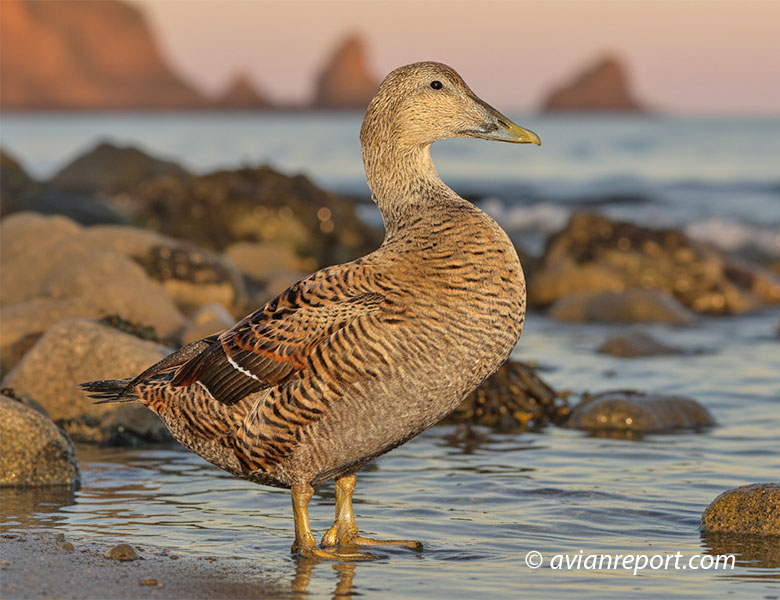
Mobility: Takeoff, Flight, and Flocking Behavior
The structural trade-offs necessary for specialized feeding are immediately evident when these birds mobilize. Mobility isn’t merely about migration; it’s a critical, moment-to-moment survival mechanism and a major field identification cue, especially when assessing waterfowl flocks at a distance.
The Defining Difference: Takeoff Mechanics
This remains the single most reliable field test for separating the two groups, irrespective of distance or light conditions.
Dabblers: The “Springing” Start: Leveraging their high buoyancy and centrally located legs, dabbling ducks can achieve an explosive, vertical takeoff. They spring straight out of the water and gain altitude rapidly, which is a vital adaptation for escaping sudden threats in the dense, confined spaces of a timber stand or a tightly vegetated marsh.
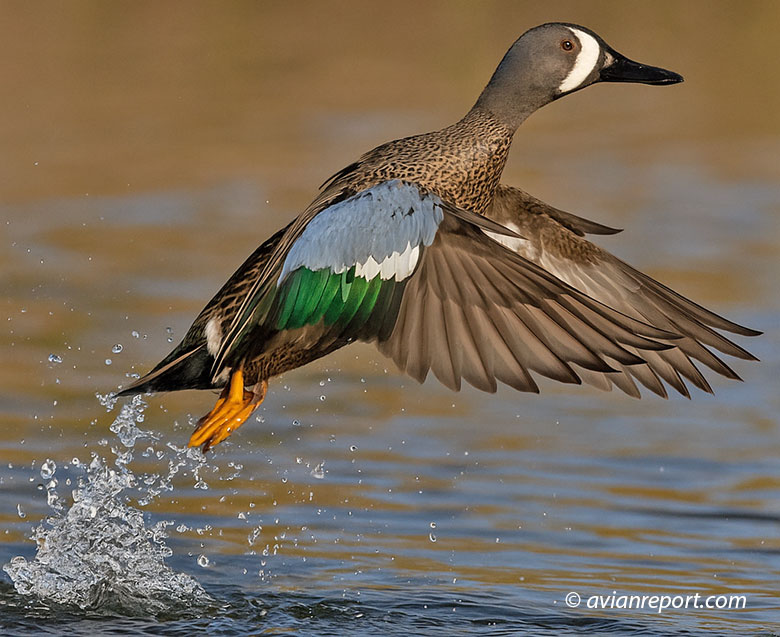
Divers: The “Pattering” Run: Because of their high body density and rear-mounted legs, diving ducks cannot launch vertically. They require significant momentum, necessitating a long, sustained running start or “pattering” across the water’s surface to generate sufficient lift. This is often noisy, requires substantial open water, and makes them momentarily more vulnerable during the initial phase of flight.
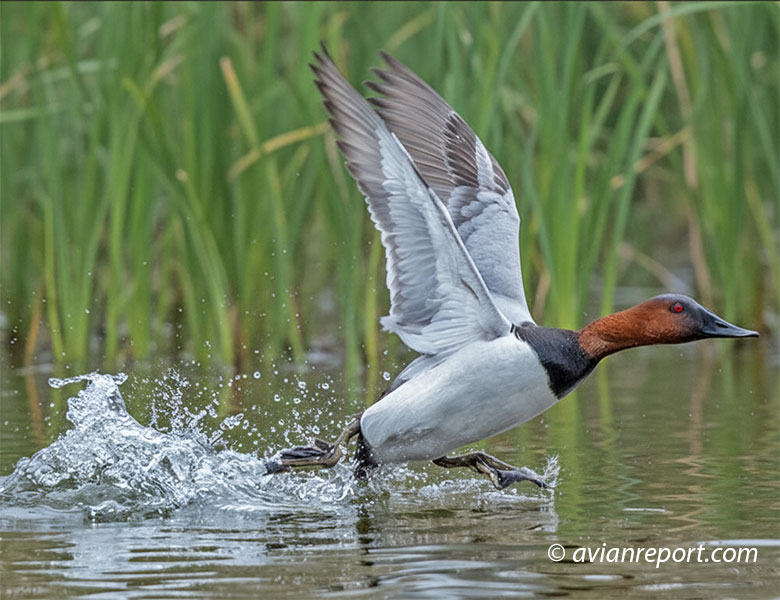
Wingbeat and Aerial Profile
Once airborne, the functional wing morphology dictates two entirely different flight styles.
Dabbler Flight: Dabbling ducks, with generally broader, higher-aspect-ratio wings, exhibit a flight characterized by slower, deeper wingbeats and often more agile maneuvering. They are built for quick bursts and low-altitude navigation over varied terrain.
Diver Flight: Diving ducks, possessing shorter, more pointed wings relative to their body mass, must compensate with sheer effort. Their flight is characterized by an audible, rapid, buzzing wingbeat. They fly with tremendous speed and purpose, typically in straight lines and at higher altitudes, reflecting their need for efficient, long-distance travel between large bodies of water.
The relatively small wings/large body ratio in diving ducks, forces them to perform rapid wing beats and fast flight. (Flock of Canvasbacks).
Social Behavior and Water Use
Their feeding and movement styles also dictate how they structure their social groupings on the water.
Flocking (Dabblers): Dabbling ducks tend to form smaller, looser flocks that graze along the nearshore edge. They are constantly moving in and out of cover, often feeding in dispersed, linear groups where their buoyancy allows them to maintain contact with the bottom.
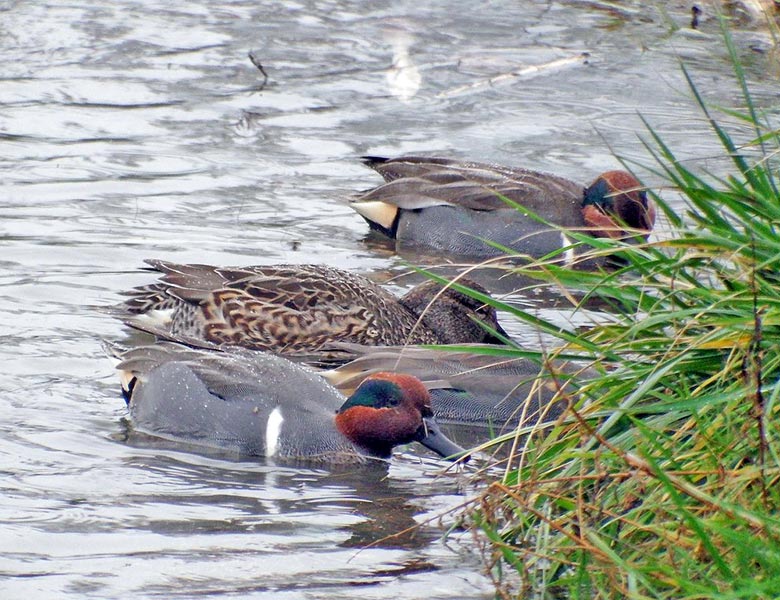
Rafting (Divers): Diving ducks, being dependent on deep, open water and requiring safety in numbers far from shore, are known for forming incredibly dense, tight rafts. These rafts, especially those seen on large coastal bays or reservoirs, can number in the hundreds or even thousands (e.g., Greater and Lesser Scaup), offering mutual vigilance while feeding in open, exposed environments.
Ecological Context and Management Strategy
The ecological split between dabblers and divers drives every management decision made by agencies like the USFWS and its partners. Their fundamental differences in habitat requirements and dietary preferences translate directly into distinct conservation strategies and unique vulnerabilities that we must address.
Habitat Specialization
The anatomical constraints of each group dictate precise water depth and vegetation requirements, which wildlife managers manipulate through wetland management techniques.
Shallow Wetlands (Puddle Ducks): Dabblers are tied to the littoral zone and shallow, ephemeral wetlands where the water column is generally less than 45 cm deep—the limit of a full tip-up. Their breeding and migration habitat management relies heavily on moist-soil management (controlled drawdowns) to stimulate the growth of annual food plants (e.g., millet, smartweed) and maximize seed production on mudflats.
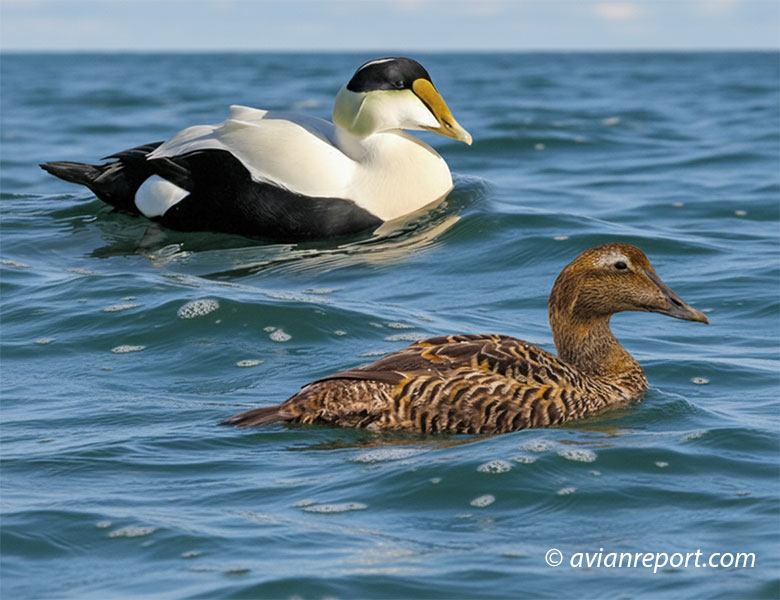
Deep Water & Coastlines (Bay Ducks): Divers require large, deep, permanent bodies of water—reservoirs, river deltas, the Great Lakes, and open coastal bays—where they can execute deep, prolonged dives. Management priority here is less about water level manipulation and more about water quality and the protection of crucial food sources like Submerged Aquatic Vegetation (SAV) beds (e.g., eelgrass and widgeon grass), which are vital energy sources on their wintering grounds.
Diet and Vulnerability
The difference in how they eat exposes each group to different threats, a concept central to contaminant monitoring and regulatory policy.
Dietary Contrast: Dabblers are primarily herbivorous (seeds, tubers, waste grain) and ingest invertebrates mostly as a source of protein during nesting season. Divers, by necessity, are far more reliant on animal matter, feeding heavily on mollusks (clams, snails), crustaceans, and small fish. This higher trophic level consumption has a direct impact on their health.
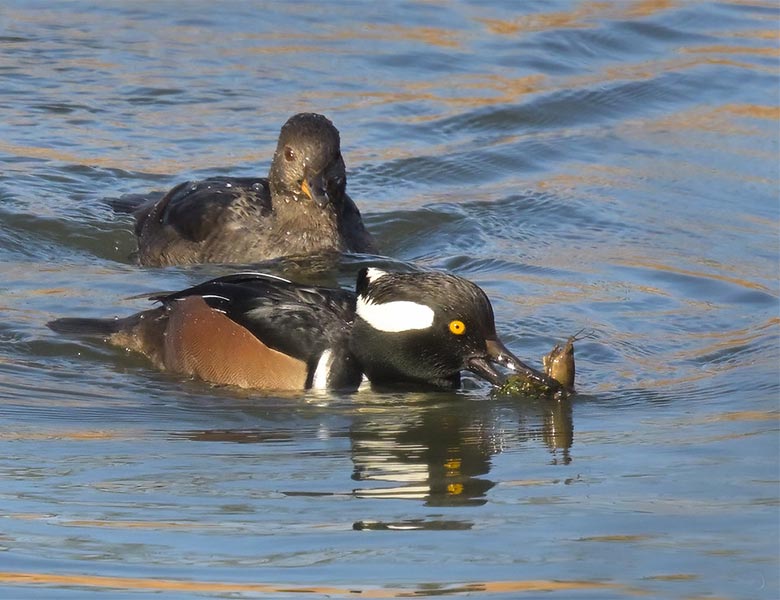
Bioaccumulation Risk: Due to their reliance on benthic (bottom-dwelling) organisms and sediment-based food sources, diving ducks (especially Aythya species and sea ducks like Eiders) are highly susceptible to heavy metal and contaminant bioaccumulation. They function as sentinel species for environmental quality; increased heavy metal burdens (like mercury or cadmium) or legacy contaminants (like PCBs) in their tissues often trace back to the contaminated sediments they forage in. This vulnerability is a major factor in regulating pollution and also underscores the importance of the historic ban on lead shot, as ingestion is more common in bottom-feeding ducks.
Conclusion: Two Adaptations to One Continent
The split between dabbling and diving ducks reveals that both evolution and effective management hinge on specialization and trade-offs. The 45 cm waterline marks their ecological divide.
Above it, lightweight dabblers thrive in shallow, shifting wetlands—built for agility, quick foraging, and rapid escape. Below it, dense-boned divers master the depths, adapted for strength and sustained propulsion in stable waters.
Recognizing a high-riding Pintail or a low-slung Canvasback is more than species identification—it’s an instant readout of ecology, habitat preference, and management needs. For waterfowl professionals and birders, behavior and structure—takeoff style, water posture, wingbeat, and gait—are far more telling than color. Mastering these functional cues, especially in the uniformity of hens and eclipse plumages, sharpens our ability to survey, monitor, and conserve North America’s waterfowl.
For a complete, professional overview of taxonomy, habitat, flyways, and species profiles across all of North America’s Anatidae, consult our definitive guide: The Complete Guide to the Waterfowl of North America.
Wonderfully organized, informative presentation. I live part time on a Rhode Island salt pond with historically large numbers of visiting winter migrants. Last year the number was down – I hope to see more this year.
Hello Susan, glad to hear that you found the article of value. There is a lot more coming.
Bird numbers always fluctuate and the reasons determining such fluctuation are multiple and vary every year. It is only over the years that real changes can be measured with certainty. Winter migrants may be back in the usual numbers next year.
Al.